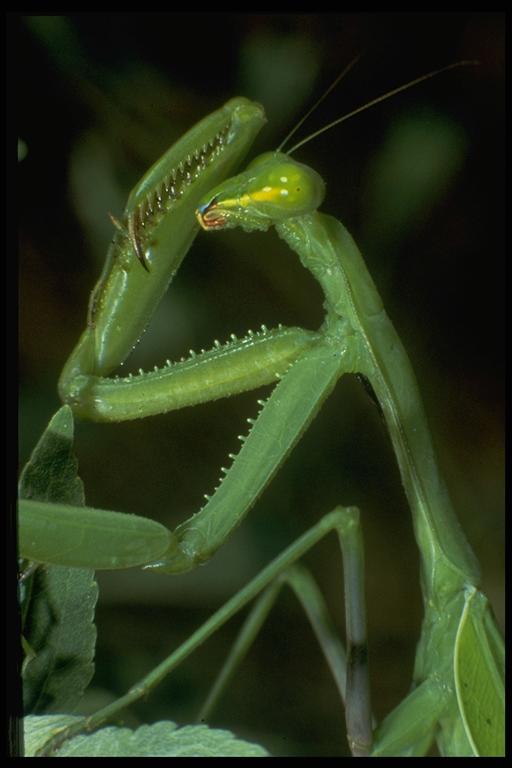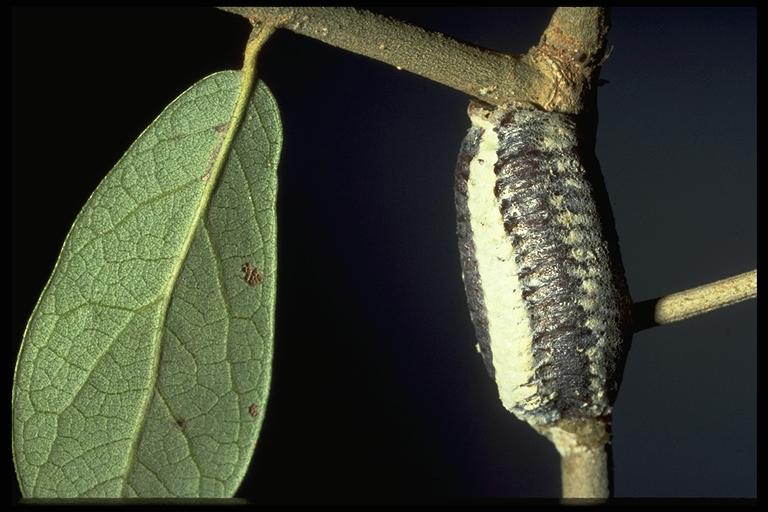
A praying mantid, Stagmomantis sp. (Mantodea: Mantidae). Photo by G. Cronholm.
Common Name: Praying mantid, praying mantis
Order: Mantodea
Scientific Name: Stagmomantis sp.
Description: Several mantid species occur in Texas. The common name comes from the way nymph and adult mantids hold their front legs, which are designed for grasping prey and held as though in prayer. Adults are green to grayish brown have well developed wings and may reach 2 to 3 inches in length. Egg masses of common Texas species such as the Carolina mantid, Stagomantis carolina (Johnson), are rectangular in shape, usually about 1 inch long and 3/8 inches wide and tall with rounded sides. Each mass contains dozens of eggs that are encased in a frothy material produced by the female that hardens into a foam-like material that is tan or occasionally white on top and darker sides.
The species most commonly sold by suppliers of natural enemies, the Chinese praying mantid, Tenodera aridifolia sinensis Saussure, does not occur naturally in Texas. Egg masses of this species are spherical frothy masses glued around twigs.
Life Cycle: Simple metamorphosis (egg, nymph, adult). In the fall, adult female mantids lay eggs on twigs, vines and other sites such as under eves of homes. Eggs hatch in the spring. Nymphs develop through several stages or wingless instars before becoming sexually mature winged adults. Only one generation is produced per year.
Habitat, Food Source(s), Damage: Wingless nymphs and adults feed actively on many pest and beneficial insects, including each other! Older mantids can feed on flies, honey bees, crickets and moths. They are not effective for the control of aphids, mites or caterpillars. Older mantids are territorial and are only found alone. The lore related to female mantids eating the heads from males in order for them to successfully copulate has more recently been questioned. Apparently, the original research was conducted with starved specimens.

A praying mantid, (Mantodea:Mantidae), egg mass. Photo by Drees.
Pest Status:Beneficial insect/natural enemy; predaceous on insects. Medically harmless.
For additional information, contact your local Texas A&M AgriLife Extension Service agent or search for other state Extension offices.
Literature: Helfer 1972; Henn and Weinzeri 1990; Metcalf et al. 1962; Westcott 1973.